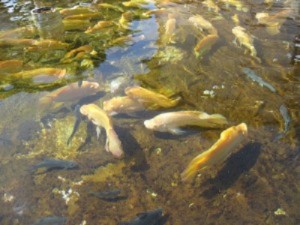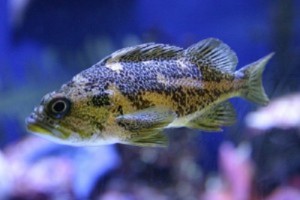Water Temperature
Tilapia is one of the most popular types of fish in aquaculture. Water temperatures should be monitored for tilapia to survive. If the water temperatures go below 68 degrees growth rate of tilapia will be affected. The tilapia will start dying if the temperatures approach 50 degrees.
 The ideal temperature ranges between 82-86 degrees Fahrenheit. There are more than 40 species of tilapia and the temperature tolerance will depend on the type of tilapia. If you live in an area with low temperatures that cannot naturally sustain tilapia it is a good idea to keep the fish in a greenhouse.
The ideal temperature ranges between 82-86 degrees Fahrenheit. There are more than 40 species of tilapia and the temperature tolerance will depend on the type of tilapia. If you live in an area with low temperatures that cannot naturally sustain tilapia it is a good idea to keep the fish in a greenhouse.
You can also use a water heater or indoor location to keep the fish warm. This is one of the major reasons why most commercial tilapia farms are located in warmer areas. What makes tilapia a popular type of fish in aquaculture is its palatability and large size.
Environment
Their omnivorous nature also allows them to take advantage of naturally occurring food making them more profitable compared to other types of fish. This also makes it easy for the farmer to feed them since tilapia food can be found easily.
Tilapias are mostly grown along with vegetables in aquaponic systems. Vegetables can benefit from the nutrients from tilapia waste as it helps purify the water. The vegetables include kale, tomatoes, lettuce and cucumbers.
Tilapia can be kept in different environments including cages, ponds, tanks and raceways. Some of the urban farmers even keep them in trash cans. The simplest method of raising tilapia is raising them in a fish pond.
Tilapias are considered an invasive species as they can negatively affect the growth and reproduction of native species if they are released accidentally into the wild. This is one of the reasons why tilapia farming is restricted or even banned in some places.
Sustainability
 Tilapias have a rapid growth, prolific reproduction rates and tolerance of high stocking density. It only takes about 6-7 months for tilapia to reach the harvest size. The growth rate makes tilapia farming inexpensive since you are able to make your profits within a short period of time.
Tilapias have a rapid growth, prolific reproduction rates and tolerance of high stocking density. It only takes about 6-7 months for tilapia to reach the harvest size. The growth rate makes tilapia farming inexpensive since you are able to make your profits within a short period of time.
Noncommercial tilapia farming is also gaining popularity as people are now looking for ways to create their own sustainable food supply. You can raise tilapia with other seafood animals including crayfish, catfish, and prawns.
To make your tilapia farm self-sustaining, it is a good idea to set aside some adult fish as breeders. These breeders will produce fry and fingerlings to help reseed you fish crop for another harvest.
Play it Safe
Check with the local authorities before you think of setting up your own tilapia farm. Some states have specific regulations about tilapia farming. Every state has its own guidelines. Your state’s aquaculture extension agent may also give you assistance on how you can grow tilapia.
We hope your tilapia farming brings you success. We have a very cool gift we would like you to have – a Guide to teach you how to feed your fish for FREE! Yes, no food to buy. Please click here to download your free copy.
Related Articles
- Turn your backyard Into a Fish Farm – Raise Tilapia at Home
- 3 Fish to Raise in Your Backyard Fish Pond
- 5 Surprising Facts about Fish Farming that Everyone Ought to Know
- Start Your Own Home Based Fish Farming Business for Profit




Dear Team,
Thank you for your tilapia research data.
see alphalapia.com to learn even more information about tilapia farming